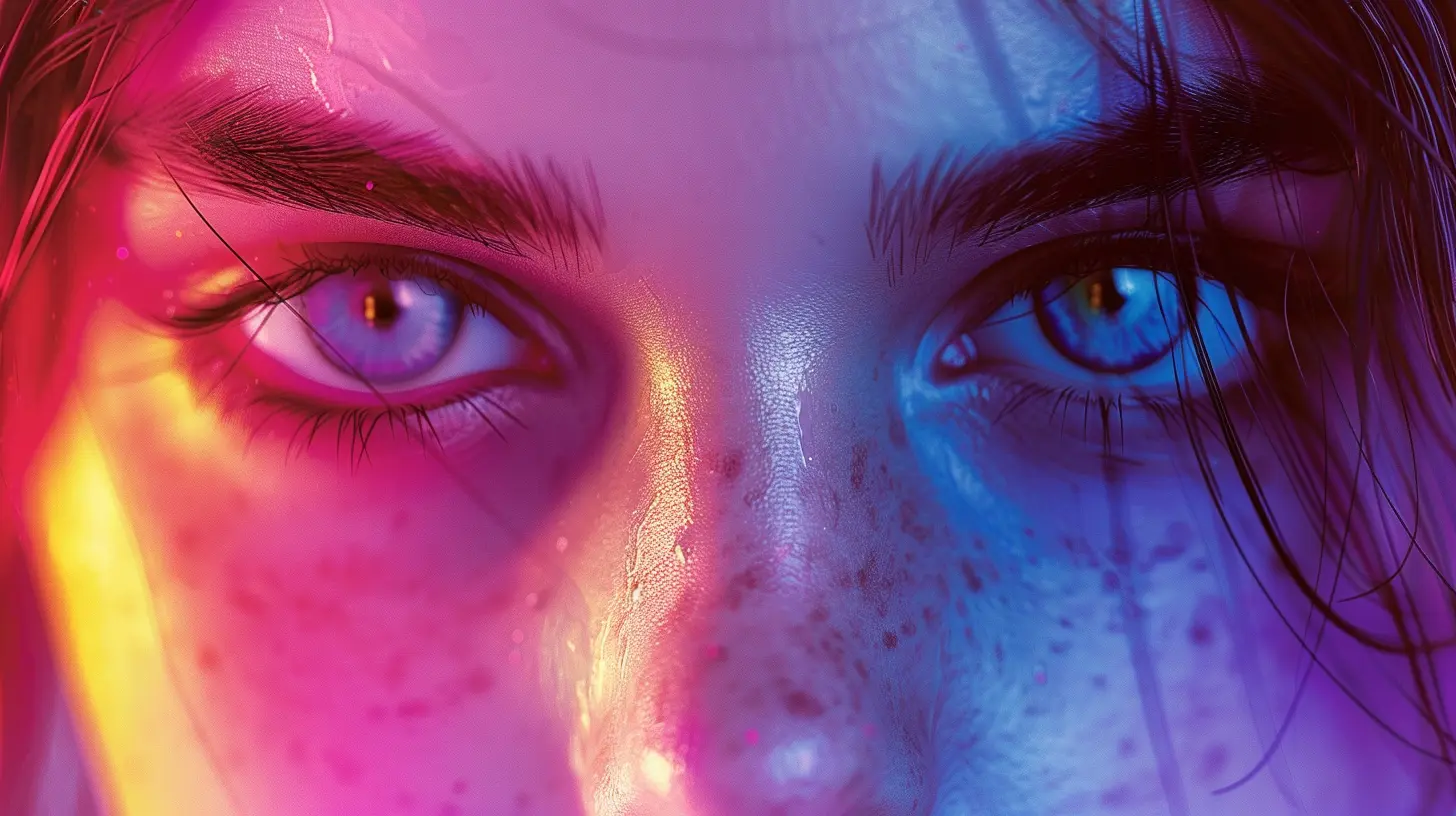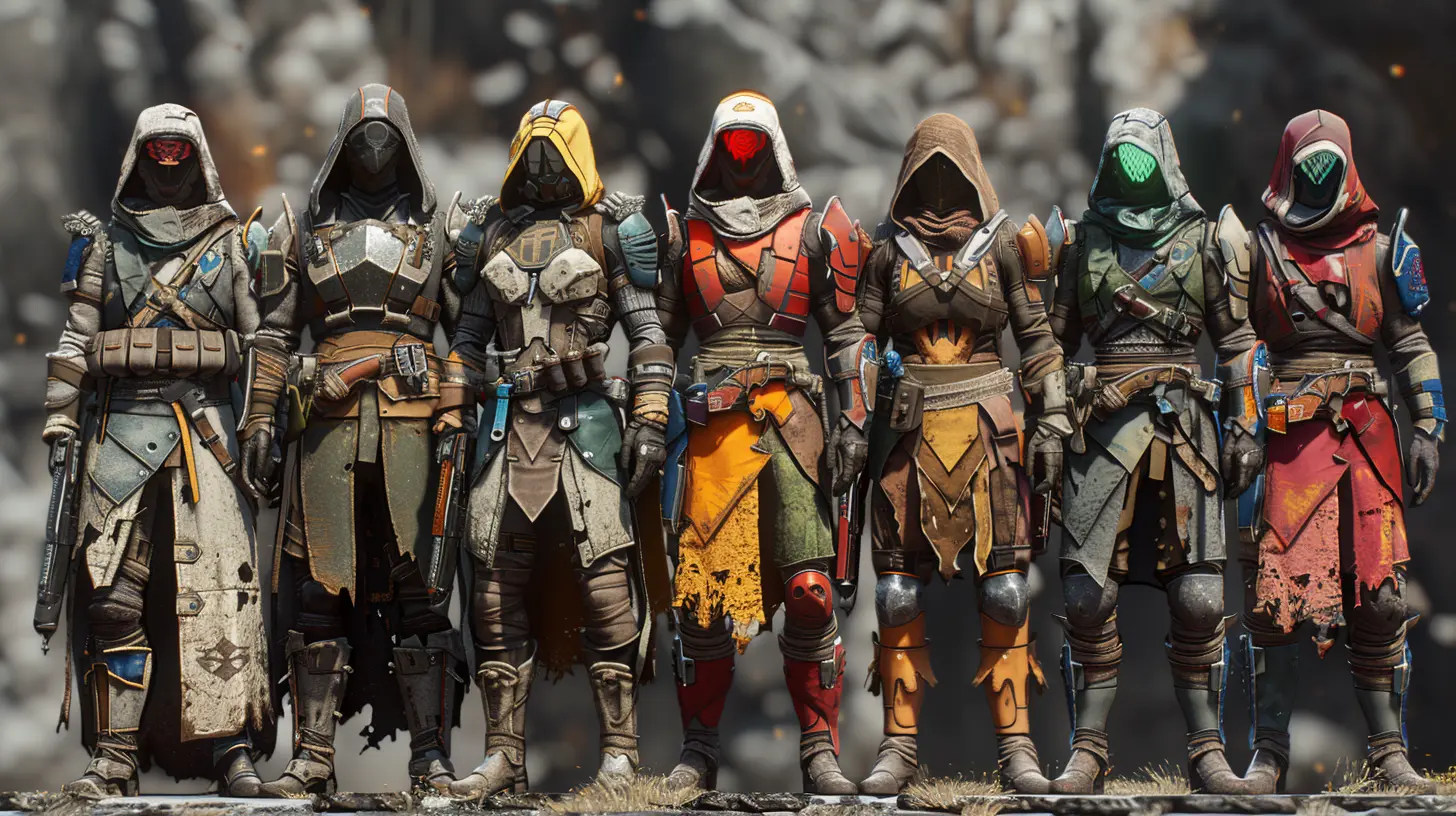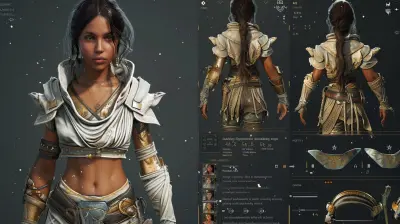Color Theory in Character Customization: How Appearance Affects Perception
3 February 2025
Let’s face it—when you’re creating a character in a game, you’re not just slapping together a bunch of random features and calling it a day. Whether you're designing the ultimate hero in an RPG or piecing together your avatar in a multiplayer shooter, every detail matters. And guess what? Color plays a huge role in how your character is perceived by others—and even by you.
Color isn’t just about aesthetics. It’s a psychological tool, a mood setter, and, in gaming, a silent storyteller. We’re diving deep into how color theory weaves its magic in character customization and how it influences perceptions in the gaming universe. Buckle up, because we’re about to get artsy, but in the coolest way possible.
Why Does Color Matter in Games?
Okay, think about this: Have you ever felt an immediate connection—or maybe even aversion—to a character just based on their color scheme? You might not realize it, but your brain is busy making snap judgments based on the hues and tones splashed across their design. It’s not just you; everyone does this.Colors have a psychological impact on how we feel and react. They can provoke emotions, send unspoken messages, and even influence decisions. In games, where storytelling and visual cues reign supreme, these color choices shape the player’s experience in profound ways.
Red might scream danger or aggression, while blue might feel calm and trustworthy. But there’s more nuance to it than that—especially when custom avatars and characters come into play. Let’s dive into the psychology behind it and how it all connects to gameplay. 
The Psychology Behind Color
Colors have meanings. No, not in some mystical “what does it all mean?” sense, but in how they’re processed by our brains. Different colors trigger specific emotional responses due to cultural associations, human biology, and even personal experiences. Here’s a rundown of common color associations:- Red: Passion, energy, power—but also anger and danger.
- Blue: Calmness, stability, trust—but can also suggest sadness.
- Yellow: Happiness, optimism, energy—but too much yellow can be harsh or anxiety-inducing.
- Green: Growth, balance, nature—but in the wrong context, it can evoke envy or greed.
- Purple: Royalty, creativity, mystery—but can also feel distant or overwhelming.
- Black: Sophistication, strength, mystery—but when overdone, it might feel intimidating or void-like.
- White: Purity, simplicity, cleanliness—but it can also come across as sterile or bland.
See what’s going on here? The colors you choose for your character aren’t just decoration—they’re a visual language. When crafting your in-game self, you’re sending out a message. Whether consciously or not, you’re shaping how others perceive your persona. 
Color Choices in Character Customization
Games with character customization are the sandbox dreams of creativity. You can tweak just about everything, from the hairstyle to the armor design to, of course, the color scheme. But here’s the kicker: your color palette changes how your character is interpreted by other players.Imagine you’re entering a battle royale game. Your character’s armor is bright pink, splashed with neon green. That instantly tells other players, “I’m fun, quirky, and maybe a little chaotic.” On the flip side, a player rocking a sleek all-black outfit might feel ominous and serious—like they’re someone you probably don’t want to mess with.
Let’s break it into specifics:
1. Red: The Bold Statement
Characters sporting red are impossible to ignore. They radiate energy, confidence, and, sometimes, intimidation. Players who gravitate toward red might want to stand out as bold leaders or fierce opponents. Just think of those iconic red-clad villains and heroes in games—they’re never forgettable.2. Blue: The Trusted Ally
Ah, blue—the color of calmness and reliability. Opting for shades of blue can signal a sense of wisdom or dependability. Many RPG healers or magic casters are splashed in blue hues for this very reason. It screams, “I’ve got your back!”3. Green: Nature and Renewal
Green is often associated with nature-based characters, from druids to archers. It’s a friendly, refreshing color, but it can also hint at cunning if paired with darker shades. Green-toned characters might suggest adaptability or an earthy spirituality.4. Black and White: The Duality
If you’re going black or white, you’re probably aiming for bold contrast. Black says, “I’m mysterious and maybe dangerous,” while white is all about purity and clarity. Together? It’s an iconic mix—the yin-yang of color psychology.
How Color Impacts Multiplayer Dynamics
When you’re playing a game solo, your character’s colors mostly affect you. But in multiplayer settings, it’s a whole different story. Your design choices can shape how other players engage with you. Want to be approachable and friendly in an MMO? Go for warm, bright tones like yellow or orange.But if your goal is to instill fear or demand respect, darker tones like black, navy blue, or deep crimson might be the way to go. Even subtle color accents make a difference. A splash of gold in your armor could signal status or wealth, while spikes of red might give “danger zone” vibes.
Here’s a quick tip: If you want to stand out in competitive games, avoid blending into the map’s background colors. Camouflage might seem smart, but in games where personality counts, vibrant, contrasting colors keep you memorable.
The Role of Color in Storytelling
Games are, at their core, immersive experiences—and color is a key storytelling tool. Picture a game where your character changes over time. Maybe your avatar starts as a naive, white-clad adventurer, only to embrace dark purples or blacks as they become more powerful (and morally ambiguous).Game developers use this technique all the time. Just think of the way color schemes shift throughout games like The Legend of Zelda or Mass Effect. Those choices aren’t accidental; they’re deliberate breadcrumbs that guide your emotional journey.
When customizing your character, you’re stepping into the shoes of a creator. By choosing specific colors, you’re adding layers of depth to your story, whether it’s a tale of redemption, power, or playfulness.
Tips for Choosing the Perfect Palette
Ready to give your character a vibrant makeover? Here are some pro tips to nail your customization:1. Know the Vibe You’re Going For: Want to look approachable? Choose warm colors like oranges and yellows. Want to intimidate? Stick to darker hues like black or deep red.
2. Don’t Ignore Color Harmony: Mix colors that complement each other. Use the color wheel to blend analogous colors (those next to each other) or contrasting ones (opposites on the wheel).
3. Consider Cultural Contexts: In some places, white might symbolize purity, but in others, it represents mourning. Think about how these interpretations might extend to your character’s design and their world.
4. Adapt to the Game’s Environment: Bright, neon colors might be perfect for a cyberpunk game but feel out of place in a medieval fantasy setting. Stay grounded in the game's universe.
5. Experiment With Gradients: Why settle on a single solid color? Gradients add depth and dimension. A character with armor that shifts from gold to fiery red screams epicness.
Closing Thoughts
Customizing your character’s appearance is more than just a fun activity. It’s a chance to align visuals with personality, send messages to other players, and even make subconscious emotional connections. Color doesn’t just affect gameplay—it enhances it.The next time you’re tweaking your character in the customization screen, remember: you’re not just choosing colors; you’re crafting perceptions. Whether you’re building a cheerful healer, a mysterious rogue, or a fiery warrior, the palette you choose holds power. Now go out there and paint the digital world with your unique style—and make it unforgettable.
all images in this post were generated using AI tools
Category:
Character CustomizationAuthor:

Pascal Jennings
Discussion
rate this article
9 comments
Issac Kirkland
Ever wonder why heroes wear blue and villains don black? The hidden power of color shapes our gaming experiences in unexpected ways.
March 27, 2025 at 5:52 AM

Pascal Jennings
Absolutely! Color significantly influences our perceptions, with blue often symbolizing trust and heroism, while black conveys mystery and villainy. This psychological impact shapes our gaming experiences and character connections.
Jinx Fisher
This article provides insightful analysis on how color choices in character customization influence player perception. Understanding color theory can enhance game design, making characters more relatable and memorable. It's a vital aspect often overlooked in development discussions. Great read!
March 16, 2025 at 3:35 PM

Pascal Jennings
Thank you for your thoughtful feedback! I'm glad you found the analysis valuable—color choices truly play a crucial role in shaping player perception.
Simone McMurtry
Color choices shape player identity.
February 22, 2025 at 5:14 PM

Pascal Jennings
Absolutely! Color choices can significantly influence how players perceive their characters, impacting identity and personal connection within the game.
Nellie Kane
This article beautifully highlights the emotional impact of color in character design—thank you for exploring such an important topic!
February 16, 2025 at 4:15 PM

Pascal Jennings
Thank you for your kind words! I'm glad you found the exploration of color's emotional impact valuable.
Nadine Nelson
This is a fascinating topic! It’s intriguing how color choices can shape our emotional connection to characters. I can't wait to explore how different hues influence player perceptions and gameplay experiences. Great article!
February 16, 2025 at 5:28 AM

Pascal Jennings
Thank you for your thoughtful comment! I'm glad you find the topic fascinating—color truly plays a significant role in shaping our experiences and perceptions of characters. Happy exploring!
Sera Kirkland
Great insights! Considering color theory in character design enhances player connection and immersion. Can't wait to see how it evolves in future games!
February 15, 2025 at 5:14 AM

Pascal Jennings
Thank you! I'm glad you found it insightful. Exciting times ahead for character design and player engagement!
Layne Ramos
Empower your creativity—colors transform characters and perspectives!
February 14, 2025 at 4:49 PM

Pascal Jennings
Thank you! Absolutely, colors are powerful tools that can significantly enhance character depth and influence how audiences perceive them.
Oriel Garcia
This article brilliantly explores the impact of color theory in character customization. It highlights how color choices not only enhance aesthetics but also shape player perception and emotional connection. A must-read for game developers and enthusiasts alike!
February 12, 2025 at 4:48 AM

Pascal Jennings
Thank you for your thoughtful feedback! I’m glad you found the article insightful and valuable for both developers and enthusiasts.
Zara McGonagle
This article brilliantly explores the intersection of color theory and character customization in gaming. It highlights how color choices influence player perception and emotional connection to characters. Understanding these dynamics can enhance game design and player experience, making it a crucial consideration for developers aiming to create immersive environments.
February 4, 2025 at 4:14 AM

Pascal Jennings
Thank you for your insightful comment! I'm glad you found the article useful in understanding how color theory shapes player experience in character customization.
MORE POSTS

Exploring the Esports Scene Around Competitive FPS Titles

Eco-Sim Greats: Discover the Best Environmental Management Games

Game Masters: How Community Mods Shape the Future of Sandbox Games

RPG Fans Rejoice: Fresh Tales and Epic Quests Await

How to Optimize Your Game Settings for Smooth Performance

Represent Yourself: How Character Customization Fosters Player Identity

How Virtual Reality Could Reshape Console Gaming